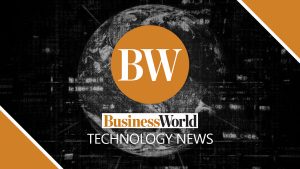
Is precise personalization killing firms’ creativity?
By Liz Adeniji
DATA-DRIVEN ersonalization has evolved to become a critical tool in the marketer’s arsenal over the years. But with personalized approaches emerging as a standard marketing practice in organizations across the Philippines, including the use of customer data platforms (CDPs), one question arises: is precise personalization stifling creativity?
When online portals like AOL and Yahoo dominated the internet in the early 2000s, advertising predominantly relied on content and context. AltaVista, Yahoo Search, and Ask Jeeves were the big giants of search engine advertising at that time, and they pioneered data-driven approaches into the advertising landscape. Google Search eventually became the dominant player that served as a poster child for the emerging category of data-driven advertising.
When the 2008 global financial crisis hit, marketing budgets were cut, and marketers increasingly turned to data to guide their advertising decisions. This period witnessed the rise of ad networks and more applications of behavioral and demographic targeting in display ad buying. Programmatic advertising eventually displaced ad networks, offering superior transparency, flexibility, and audience-based targeting that ad networks struggled to match.
DRIVING RESULTS, MITIGATING RISKS
Today, as the Philippines is impacted by inflationary pressures, streamlining workflows through data-driven marketing is even more critical for businesses, effectively optimizing budgets beyond just tightening their belts. With data-driven personalization, companies can target specific audiences on a 1:1 basis with precision. This allows product teams to deploy better products that their customers actually want. At the same time, precise personalization empowers contact center agents to resolve cases faster while delivering enhanced customer experiences and preserving customer loyalty.
Done right, personalization also allows companies to target customers with relevant content without compromising their privacy, amid regulations like the Data Privacy Act of 2012 (DPA) obligating businesses to safeguard their customers’ data privacy.
Imagine a scenario where a customer has just opted out of being targeted. Excluding this individual immediately from ad retargeting campaigns, removing them from all e-mail distribution lists, and suppressing them from seeing social media ads becomes critical. However, the reality is that not many companies can confidently claim to possess such capabilities today.
Harnessing “good data” for personalization at scale produces outstanding outcomes. For example, Zalora, a prominent direct-to-consumer online fashion retailer in Asia, turned to an innovative solution to standardize its data collection, achieve a complete view of its customer base, and experiment faster. With a customer data infrastructure in place, Zalora doubled its conversion rates by activating real-time data to enable segmentation and target its highest-value customers in a personalized way.
KEEPING IT CLASSY, NOT CREEPY
Putting the threat of punishment aside, it is absolutely clear that the largest and most profitable companies in the world are now data-driven and lead with personalization. A prime example is Amazon, which uses data to create highly relevant and personalized experiences. Amazon understands that personalization is key to keeping customers engaged and coming back for more.
However, there is a fine line between precise personalization and — simply put — being creepy. Most consumers have experienced a scenario where a product they’ve browsed online persistently trailed them across the internet, lingering long after leaving the retailer’s website. When personalization becomes annoying, brands not only risk wasting marketing dollars but also alienating current and prospective customers.
Personalization and creativity can certainly coexist. Personalization can enhance creativity by allowing brand marketers to create more targeted and relevant content. Like clothing retailer ZALORA, brands can use data to understand a customer’s preferences and create personalized product recommendations or offers that resonate with them.
Meanwhile, it’s important to note that some of the most iconic consumer brands were built on brand advocacy and brand love. “Just Do It” and “It’s Finger Lickin’ Good” are slogans from iconic brands that need no introduction. Consumers know exactly who they are, and it isn’t because they use great data for targeting or personalizing website experiences. In fact, most of these consumer brands have little customer data.
That said, these brands also understand the power of data. That is why data clean rooms as a category has emerged to help brands with little first-party data, gain deeper insight into their audience by data co-sharing with other brands.
Ultimately, personalization is essential for businesses to remain competitive, especially during times of economic uncertainty. The focus on cost savings, the drive for profitability, and the need for privacy compliance have made personalization a must-have tool for advertisers. The reality is that personalization and creativity can coexist; in their intersection lies innovation. Personalization, when combined with creativity, creates magical customer experiences that lead to brand favorability, loyalty, and profitability.
Liz Adeniji is the regional vice-president of Segment, Asia Pacific & Japan at Twilio.



